Text
Ok, here's the playlist. It's not organized so all the genres are mixed together. Instrumental, rock, indie, pop, rap, lo-fi beats, traditional, modern, there's even one metal song (with a female vocalist!). Most of them are covers of folk songs but some are completely original. Enjoy <3
#armenian music#shut up april#i don't have much time looking for artists and new songs anymore but i still add to it from time to time
4 notes
·
View notes
Text
youtube
Armenian museum of America's channel (and website) is a goldmine for discovering new interesting information about armenian life, customs and art. They also regularly organise online concerts where you can listen to a plethora of musicians playing in different genres. I want to share a concert of one of my favourite bands - Katil. Please, give them a listen if you enjoy West Asian/folk/indie sound, they are very good.
#my favourite song of theirs is kuzim though. they don't play it in the video unfortunately :(#i kind of want to post my personal armenian music playlist tomorrow ... it has many different genres and bands and musicians ->#so anyone can find something that they would like i think#posting because i *did* say listen to our music today☝️#Youtube
6 notes
·
View notes
Text

Split Pomegranate Zine is OUT!!!
Here's a little sneak peak of my piece for the zine! I am so honored to be a part of this project and to be able to help my people in the homeland by using my art :'^)
Please check out the Split Pomegranate Zine by following >this< link! You will get 175 pages of the most beautiful and diverse art (think painting, writing, poetry, sculpting and many more!) from 93 participants while also supporting vulnerable populations in Armenia <333
183 notes
·
View notes
Text
To anyone interested in learning about Artsakh, its history and the struggle of Artsakhi Armenians for freedom and self determination, I suggest checking out Learn For Artsakh initiative (@/learn4artsakh on Instagram).They share a lot of information on these topics and spotlight the interconnection of violence inflicted on the indigenous groups in the region by the colonizing powers.
They also have an e-library with free pdfs of many books written by Armenians about Artsakh as well as literature about DR Congo, Sudan, Palestine and other nations experiencing genocide (scroll down to the "Libraries Against Genocide" section).
419 notes
·
View notes
Text
Facing The Facts: Resources on the Armenian Genocide

Frequently Asked Questions About Armenian Genocide
Sample Archival Documents on the Armenian Genocide: U.S. Archives
Sample Archival Documents on the Armenian Genocide: British Archives
Map of the 1915 Armenian Genocide in the Turkish Empire
Talaat Pasha's Official Orders Regarding the Armenian Massacres, March 1915-January 1916
The Massacre of the Armenians (”Ambassador Morgenthau describes the forced evacuation of one group of Armenians from their homeland to the Syrian desert.”)
American Documents
British Documents
Russian Documents
French Documents
Austrian Documents
Public Lectures
Eye Witnesses
The Turkish Woman
That is all right, but who killed hundred of thousands Armenians?
Einar af Wirsen
The Story of Anna Hedwig Bull, an Estonian Missionary of the Armenian Genocide.
"That's How It Was"
ARAB EYEWITNESS FAYEZ ALGHUSSEIN ABOUT THE ARMENIAN GENOCIDE
Report by an Eye-Witness, Lieutenant Sayied Ahmed Moukhtar Baas
Letters of Turkish doctors addressed to the Ministry of Internal Affairs of Turkey
Martyred Armenia: Eyewitness account of the Armenian genocide by Faiz El-Ghusein a Turkish official
PHOTO COLLECTION OF ARMENIAN GENOCIDE
3K notes
·
View notes
Photo

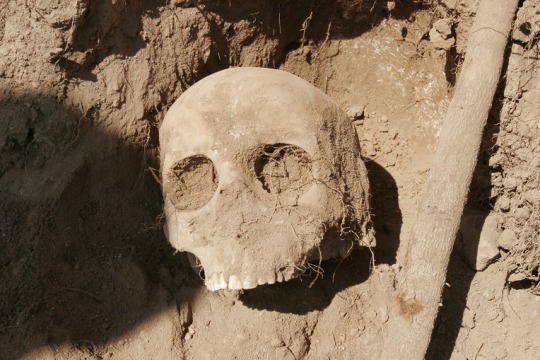

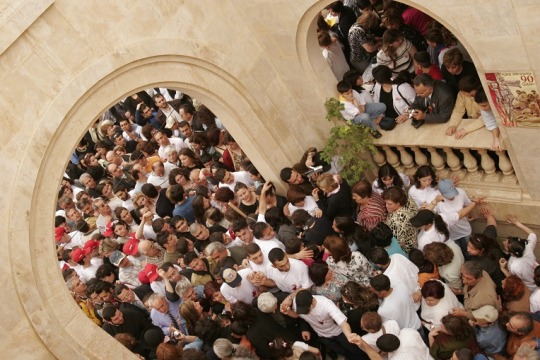

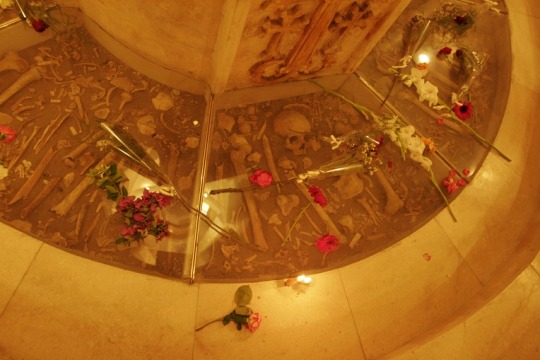
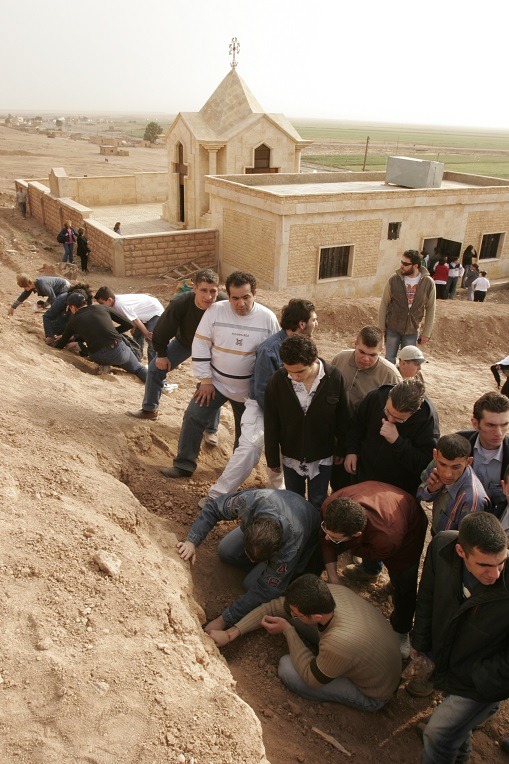
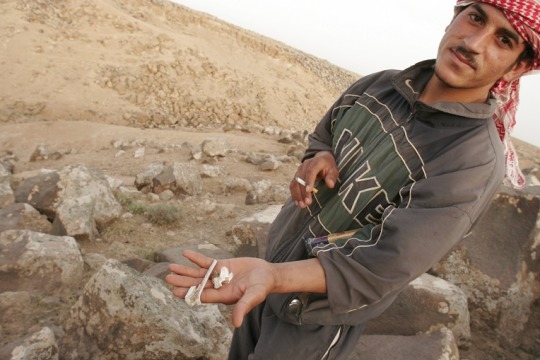

SYRIA. 2005. Armenian Mass Graves Revisited. All pictures: Alexandra Avakian
Photographs 1, 7 & 8: At Margedeh, an Armenian Mass Grave site. Buses of Armenians arrive to pray at the site on Genocide Day and dig for bones.
Photographs 2, 3, 5 & 9: Ras al-Ain (al-Hasakah governorate).
Photographs 4 & 6: Genocide Memorial Church in Deir ez-Zor on April 24, 2005 (Deir ez-Zor governorate).
It began in Yerevan, while I was photographing the National Geographic story on Armenia that was published in 2005.
“Sandra, there are a lotta bones still out there in the desert in Syria. You have to see it, jan!” When Hirair Hovnanian told me this in 2004, I could not stop thinking about it.
I knew about the Armenian Genocide, of course, but as a third generation Armenian American (on my father’s side), my grandparents didn’t want us to think about these terrible things.
They wanted us to be truly American, free of the sorrows of the old country, like many Americans who have fled starvation, war, genocide, dictatorship, and economic insecurity from all over the world.
I decided to go to Syria on the 90th anniversary of the Armenian Genocide and find those bones. I secured a grant from the Hirair and Anna Hovnanian Foundation, which specializes in furthering education and culture, and that was enough for me to pull off my mission.
I was hoping the photos I brought back would—besides being evidence—encourage the Armenian church in Syria to try and buy the Armenian mass grave land of Ras al-Ain from the Syrian Waqf (Islamic Trust), in order to protect it from total destruction. The erasure and/or denial of physical remains and documented history is a continuation and final act in genocide.
I had to plan with the utmost care. In 2005, it was dangerous to go poking around the subject of the Armenian Genocide in Bashar al Assad’s Syria. Turkish investment in the country was roaring along. I was warned by a high-level Armenian church official and a Syrian diplomat: Do not tell anybody what you are doing.
The cleric said, “Be careful. You are too late—under Hafez al Assad it would have been ok.”
The high-ranking Syrian diplomat who gave me my visa said, “Go, go and do your job. My family always spoke of what happened to the Armenians. But you must never tell anyone what you are doing. Simply say you are there to photograph Armenian culture. Do not check in with the authorities.”
Syria has a proud record of having helped the Armenian refugees during and after the genocide. Syrian Armenians have thrived and their culture was embraced in Syria. Syrians know well what happened to the Armenians in 1915, on their land, a part of the Ottoman Empire back then.
But the genocide sites at the time of my 2005 trip were being compromised: A waterworks project complete with bulldozers was atop the Marghedah grave; Shadadeh was closed off as it is in an oil field. The mass grave at Ras al-Ain was being demolished by farmers.
So it was a distinguished Armenian-American couple, a top Syrian diplomat, two Armenian Genocide scholars (one in Washington, one in Syria), an Armenian driver, and a local church member who helped to make these pictures happen. (Names withheld to protect sources.)
Unlike forensic archaeologist Dr. Roxana Fellini’s experience in 2007, which was a crucial part of an official archaeological dig approved by the Syrian authorities in Ras al-Ain/Tell Fakhariyah, in 2005 mine was not—and it got spooky. And the last thing I wanted was to put anyone in danger.
In Aleppo, Deir ez-Zor, and Margadeh, there were a lot of other people around. How could a woman in a church with a camera be a threat?
But as we took off in a battered old car north along Rt. 7, where there are mass grave sites along the old path of the Khaibur River, we took even greater care.
In Ras al-Ain, we stayed in the back room of an Armenian home as people started coming by to see who I was. “She is a Canadian Armenian looking for family roots,” the head of the family told them.
I photographed the mass graves at Tell Fakhariyah at the edge of Ras al-Ain when the coast was clear. I had to work quickly.
Government agents began to question anybody I visited after we left, even an old Kurdish grandmother who had an Armenian Genocide survivor father. One of her grandsons carried an Armenian first name.
At the time I photographed the Ras al-Ain site, the mass grave area was rented to local farmers by the Syrian Wakf (Islamic Trust), adjacent to a Muslim graveyard.
The people in this region of Syria would not eat the produce grown on the mass grave and had to sell it far afield.
The farmers crushed skulls and tossed bones aside every time they worked the land. There was no protection for this neglected and holy place. An Armenian church member tried his best to keep track of the goings-on at the mass grave. He had been beaten there several times.
The sight of so many bones in Syria going unprotected: so sad. There were little children’s molars. The bones there were mostly of women and children, as most healthy males were already killed.
After we returned to Aleppo, we shopped in the souk and photographed a genocide memorial, but I made plans to fly immediately to Paris from Aleppo—and not through Damascus, as originally planned. I got my pictures out and they remain an important document of the Armenian Genocide, especially the under-documented sight of Ras al-Ain/Tell Fakhariyah.
In 2010, I was in Syria again for an unrelated cultural story.
At that time I heard from a trusted source that Syria had given its original official, contemporaneous documents on the genocide to Turkey. The Turks maintained that since Syria was under Ottoman control in 1915, that the documents belonged to Turkey.
Syria and Turkey are on bad terms at the moment due to their respective positions on the civil war.
During this war, the town of Shaddadeh and its oil field containing an Armenian mass grave have been taken over by Al Nusra Front, Islamic rebels.
The Memorial Church in Der Zor has been blasted and nearly destroyed, and the Armenian Syrians have suffered along with their Syrian countrymen, in Aleppo and elsewhere in the country.
Ras al-Ain and the area around it has changed hands numerous times—in fierce battles between the Syrian-Kurdish rebels, the radical Islamist forces, the split Free Syrian Army. It’s a traditionally Kurdish region, and Kurdish forces are reportedly in control of Ras al-Ain now.
Dr. Fellini received good news that Tell Fakhariyah is being safely guarded, and that there is no damage to the dig site. I hope she will be able to finish her amazing work there in the future.
But what of the future for the human beings in Syria who cannot get out, when one force dislodges another on a regular basis?
It happened again in March: in the historically Armenian town of Kessab, when Al-Nusra Front forced Armenians to flee.
What of the other Armenian Genocide sites that are in regions like Der Zor and Margadeh? Is this key physical evidence of the Armenian Genocide—the Syrian mass graves—further eroding now?”
Article by Alexandra Avakian
The Armenian Genocide Martyrs’ Memorial (see pictures 4 & 6) in Deir ez-Zor, Syria, was a complex dedicated to victims of the Armenian Genocide. The memorial complex served as church, museum, monument, archive centre and exhibition. Every year, on 24 April, tens of thousands of Armenian pilgrims from all over the world visited the Deir ez-Zor complex to commemorate the genocide victims, with the presence of their religious leaders.
On 21 September 2014, the memorial complex was blown up by militants of the so-called Islamic State of Iraq and the Levant.
#armenian genocide#մեծ եղեռն#read this in full please!#sorry for the human remains on the tl i don't know how to tw them properly but also i *don't* want to tw them#you will have to see them today
609 notes
·
View notes
Link
If history was any guide, the director Terry George figured there’d be weirdness around his new film, “The Promise,” about the Armenian genocide. Sure enough, he was right.
One of the actors, Daniel Giménez Cacho, said he was contacted before filming by a Turkish ambassador. Keeping in line with Turkey’s official stance, the diplomat insisted that the genocide, in which nearly 1.5 million Armenians were killed, had never occurred. After the movie’s premiere at the Toronto International Film Festival in September, it racked up 55,000 lowly one-star votes on the Internet Movie Database, which is quite something considering only a few thousand people had actually seen it at the three public screenings.
And then, six weeks before “The Promise” hit theaters this weekend came another film that shared uncanny parallels. Like “The Promise,” “The Ottoman Lieutenant” hinges on a love triangle set in Turkey during the early days of World War I. Unlike “The Promise,” “The Ottoman Lieutenant,” which stars Michiel Huisman and Josh Hartnett, was backed by Turkish investors and has been pilloried by critics for whitewashing historical events.
The battle over these two new films represents just the latest front in Turkey’s quest to control the historical narrative. In 1915, Ottoman Turks, fearful that the restive Christian Armenian population would side against them in the war, began massacring Armenians and force-marching them to their deaths. The United Nations, the Catholic Church, the European Parliament, historians and scholars have roundly recognized the atrocities as a genocide, the 20th century’s first.*
*The Armenian genocide was preceded by the Herero and Nama genocides, which took place in what was then German South West Africa between 1904 and 1907.
#i know you tumblr people love oscar isaac - watch the promise!#it was review bombed by turks so maybe also leave it a good rating#i've heard that it's pretty mild in the actual depiction of the genocide in case you are worried about the violent parts#the promise#armenian genocide#մեծ եղեռն
280 notes
·
View notes
Text
24.04.2024 - today is the Armenian Genocide remembrance day. If you care for Armenians who, even 100 years later, are still fighting for their right to exist, spread these donation links and donate yourself (if you can). Read up on the Armenian Genocide - here and here.
Artsakh has been blocked for 2 weeks 100+ days already, 120.000 people are deprived of their human rights, many of them are children. Tomorrow is Christmas, and on this very special holiday consider supporting indigenous christian nation by donating to good causes.
After 9 months of total blockade and after heavy shelling by the fascist dictatorship of Azer/baijan, the population of around 120.000 indigenous armenians had to flee Artsakh. Armenia is a small country, its population numbers at just a little below 3 million people - to accomodate more than 100k people, who left everything behind and need to find new places to live and work at, is a heavy task. Consider donating to the charities listed here.
URGENT:
Solar Haghorti - provide hot water to the Haghorti village in Artsakh
Sunrise in Artsakh - solar water heaters for Artsakh (please read the page, donation button is in the text, it's easy to miss)
Greenhouse Project - building greenhouses to overcome the challenges faced by Artsakh’s loss of land after the war as well as the blockade
Greenhouses and Beekeeping for Artsakhi Armenians - help Artsakh families to rebuild their lives in Armenia and create food secure and climate resilient communities
Supplies for Syunik and Beyond - fundraising for the Border Villages in Syunik
Legal Defense Fund for Jerusalem Armenians - help the Armenian Community of the Old City of Jerusalem as it stands in defense of its survival and security
OTHER:
Armenian food bank - food, clothing, medicine
VIVA foundation - doctors and medicine (25% of what I get from my winter commissions will go here)
Frontline Therapists - provides mental health services to Armenian veterans and others experiencing war related trauma
All for Armenia - support vulnerable populations, displaced families and border communities in Armenia
Kooyrigs - aid for those living in areas highly targeted by azer\\baijan
MIASEEN - stability for families in need
LGBTQ+:
Pink Armenia - serves community's needs, protects LGBTQ+ people's rights and pushes for the change of public policy around LGBTQ+ issues
GALAS - supportive network for LGBTQ+ people, promotes their personal empowerment within their communities and helps to build bridges between the LGBTQ+ and Armenian communities
Right Side - community-based rights defender non-governmental organization for the protection of transgender people and sex workers in Armenia
3K notes
·
View notes
Video
Excerpt from Soviet-Armenian film Nahapet Նահապետ (1977) directed by Henrik Malyan. Based on a novel by Hrachya Kochar, the film depicts the Armenian genocide of 1915. Nahapet is a survivor who tries to rebuild his life after the tragic loss of his family. The scene is accompanied with Armenian folk song “Dle Yaman” Դլե Յաման, which became a hymn of the genocide, here it is sung by Melania Abovian.
One of the recurring scenes in the film involves scores of red apples falling from a tree, rolling into a river, and floating en masse downstream. The scene is a painful symbolic reminder of the multitude of Armenian bodies thrown into the Euphrates by the Young Turk regime during the genocide. (x)
An apple tree on the lakeshore, with countless red fruits rolling down towards the blue water, is how Malyan, the ‘lyricist’ of Armenian cinema, pictures the huge loss sustained by his nation. Yet like all true metaphors, this image is multi-semantic and means not only loss but continuation, the prospect of reaching the shore one day. […] ‘salvation’ and ‘revival’ of the apple tree symbolize the rebirth of a massacred nation. (x)
2K notes
·
View notes
Text
“The dehumanization of the Armenians was furthered by the fact that so many of the rapes were perpetrated in public, indeed in many instances in front of family members. Survivors confirm that rape or threat of rape thus functioned as a means of intimidation throughout the Genocide. A female survivor for Kighi by Erzurum relates: “It used to be said that if we harmed the gendarmes, then others would come and harm our women. We were not the ones who were afraid, only the men in our group were. They used to say if they did something to a Turkish gendarme, they would only be hurting their own women.” Rape also constituted a threat hanging over the heads of those women who escaped the deportations or entrusted themselves to rescuers. Five informants in the [Donald E. and Lorna Touryan] Miller interviews [from which were written “Survivors: An Oral History of the Armenian Genocide] speak of rapes that occurred outside the context of the deportations. Two of them refer to sexual attacks on groups of women traveling unaccompanied, while two others report rape or attempted rape of women or girls entrusting themselves to Turkish “protectors.” One other informant implies that a gendarme raped an escaped women in his charge while returning her to the deportations. Beyond sexual abuse, female deportees were particularly vulnerable to other forms of physical violence. According to some, these included horrible medical “experiments.” The theft of clothing also represented an assault on women’s bodily integrity and creased victims’ chances of survival during the hardships of the deportations. In particular, the nakedness of female deportees contributed to their dehumanization in the eyes of the general population; as one foreign observer recounted: “Farther on, all the survivors…were entirely stripped of their clothing…. They were brought into Aleppo the last few miles in third-class railway carriages, herded together like so many animals. When the doors of the carriages were opened, they were jeered at by the populace for their nakedness.””
— Katherine Derderian, “Common Fate, Different Experience: Gender-Specific Aspects of the Armenian Genocide, 1915-1917”
163 notes
·
View notes
Text
youtube
"Grandma's Tattoos" (2011) is a documentary film by Suzanne Khardalian. The filmmaker goes on a journey to investigate her family's history and reveal the fates of thousands of Armenian women and girls, who survived the 1915 Armenian Genocide but were forced into prostitution by their captors.
#armenian genocide#yes this is a full movie on youtube. save it for later if you can't watch it now#rape is a tool of genocide#tw sa mention#tw csa mention#Youtube
36 notes
·
View notes
Text
youtube
Aurora's Sunrise is Armenia's official Oscar entry. The Film tells the actual story of Aurora(Arshaluys) Mardiganian, Armenian Genocide survivor who becomes an actress in the USA.
81 notes
·
View notes
Text
I think the problem with the people's perception of this topic lays in the thought that the Genocide has ever truly ended. Even for those who know about it (which may not seem like that online but unfortunately it's NOT the majority of people in the real life) the events seem to be far away, almost buried in history. Which may be true for some, but definitely not for Armenians. Every year members of the community remind everyone about the Genocide not only out of want for it to be recognized and remembered, but also because it continues to happen 'TILL THIS DAY.
Artsakh was completely ethnically cleansed of its indigenous Armenian population of 120.000 people just last year, in September, by Turkey's closest ally and "brotherly nation" of Azerbaijan. And before that, in 2020 hundreds thousands of Armenians lost their homes; many, including civilians, had been killed, tortured and abducted in the war by the same fascist country of Azerbaijan. Of course with the help of Turkey, again.
I have said before, that the world has failed us, and what I meant by it is that the most powerful world governments are ALL complicit in the horrors we have to go through. Our deaths and suffering is politically and monetarily beneficial to them. The US and its NATO ally - Turkey, along with Israel - are one of the biggest sellers of weapons to Azerbaijan, while EU buys their gas to distance themself from Russia. Ironically enough part of that gas supply is actually Russian. Changing one genocidal partner to a different one doesn't make sense, but as long as people that are dying are not on the European doorstep it's all cool, I guess.
At this point, I have been thinking for months about what update I should give in this post, and as much as I would like to put out something inspiring and hopeful, I just can't bring myself to it. Currently Armenia is under a very real threat of invasion (internationally recognized Armenian territories have been occupied for 4 YEARS btw) and when this happens, I am afraid we will face this alone. Again. Our people are strong, creative and resilient and I am sure our culture will continue to live on, even in the worst circumstances, but the thing is - we shouldn't be in these circumstances to start with. The complete disregard of our situation by the world, and even worse - the benefits that this world reaps from it, the impunity, hypocrisy, ignorance - is what breeds a monster the existence of which seems to be unreal in the year 2024. Especially when it could have been prevented.
Today spend your time learning more about the Armenian genocide, learn about the struggles of Artsakhi Armenians for freedom and self determination, donate, write to your governments, reach out to your Armenian friends and local Armenian communities, look at our art, listen to our music, hear our stories, remember us. Despite everything, we are still here and we are not going anywhere. Peace.
April 24th is Armenian genocide remembrance day.
If you don't know what that is, take some time today to research and educate yourself on the events. Here's a good starting point to learn about what happened to armenian population of Turkey in 1915:
There's also this website, but if you decide to open photo archives tw for literally everything (it's brutal):
Hear our stories, listen to our music and look at our art today. Despite everything we are still here and we aren't going anywhere. Never again.
501 notes
·
View notes
Text
Armenian Genocide remembrance day today, will reblog useful things and info posts, please, don't scroll by when you see them.
#i always feel like i have to give a warning for some reason#this year this day feels especially bad. not to get vulnerable on the hellsite but i still can't come to terms that i can't visit my ->#homeland. i will never see the village where my grandma was born and where my mom spent her summers.#my great-granfather's house is probably already taken over by az/ris or razed to the ground. it now only exists in photographs for us.#depressive
4 notes
·
View notes
Text
Please don't forget Armenians
Today is Armenian genocide remembrance day. On april 24, 1915 started mass deportations of hundreds of Armenian intelectuals and community leaders, who were (most of the time) eventually killed. Armenian women and children were systematically r//ed and forcibly converted into islam. There were more than 2 milion Armenians in ottoman empire prior to ww1, 1,5 milion of them were viciously killed. Three millennia of Armenian civilaziation in eastern Anatolis was fully destroyed. Turkey today refuses to acknowledge genocides of christian minorities in early 20th century.
Do you know that mass ethnic cleansing of Armenians in ottoman empire inspired Lemkin to coin the term 'genocide'?
Last year in september azerbaijan allied with turkey initiated a war against Armenia. More that 5000 Armenians were murdered, thousands of Armenia families had to live their ancestrial land to not get murdered. There are hundreds of vids on internet where armenian p.o.w.s are tortured. Recently azerbaijan opened a "museum" displayind dead or dying Armenians and kids were allowed to visit it.

Please educate yourself on Armenian genocide. You can also donate here to help Armenia. Thanks for reading!!

19K notes
·
View notes
Photo

New Post has been published on https://massispost.com/2024/04/azerbaijanis-completely-destroy-kanach-zham-church-and-ghazanchetsots-cemetery-in-shushi/
Azerbaijanis Completely Destroy “Kanach Zham” Church and Ghazanchetsots Cemetery in Shushi

SHUSHI — Between December 28, 2023 and April 4, 2024, St. John the Baptist church (S. Hovhannes Mkrtich), a 177 year old landmark in Shushi was destroyed, Azerbaijan’s most egregious violation yet of a December 2021 ICJ order, the Caucasus Heritage Watch reports. Built by Armenians in 1847, the church, also known as Kanach Zham (Green Chapel), was damaged amidst the 2020 war. In the aftermath of the war, the Baku diocese of the Russian Orthodox Church laid claim to the building and pledged restoration. Nevertheless, the church is now gone. At the entrance to the belfry, building inscriptions in…
22 notes
·
View notes
